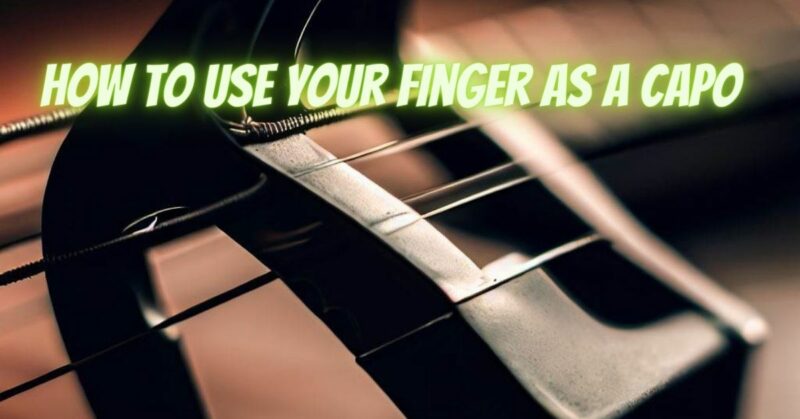A capo is a useful accessory for guitarists when it comes to transposing songs or changing keys. However, in situations where a capo is not available, you can still achieve a similar effect by using your finger as a makeshift capo. In this article, we’ll explore a technique for using your finger as a capo, allowing you to transpose songs and play in different keys without the need for an actual capo.
- Understand the Principle: To use your finger as a capo, you’ll need to mimic the function of a capo by pressing down all the strings at a specific fret. The fret you choose will determine the transposed key. For instance, if you place your finger across the 3rd fret, the guitar will sound three semitones (or half steps) higher than the open position.
- Choose the Fret Position: Determine the desired key you want to play in. If the original key is too low for your voice or you want to match the key of another instrument, identify the new key you wish to transpose to. Once you know the new key, find the corresponding fret position on the guitar neck. For example, if you want to play in the key of G but the original chords are in the key of E, place your finger across the 3rd fret to achieve the desired transposition.
- Positioning Your Finger: To use your finger as a capo, place it across all the strings at the desired fret position. Apply firm and even pressure to ensure that all the strings are pressed down against the fret. Make sure your finger is positioned perpendicular to the fretboard to prevent any strings from muting or buzzing.
- Adjust Finger Placement: As you use your finger as a capo, you may need to make slight adjustments to ensure the strings are properly fretted. Check for any muted or buzzing strings and make necessary finger placement adjustments. Be mindful of maintaining a clear and clean tone for each string.
- Play and Experiment: Once your finger is in position, strum or pluck the strings to hear the transposed chords. Experiment with different chord shapes and progressions to accommodate the new key. Keep in mind that while the finger-as-capo technique allows you to transpose chords, it doesn’t change the voicing or fingering of the chords themselves. So, you’ll need to adapt your chord shapes accordingly to match the new key.
- Practice and Precision: Using your finger as a capo requires practice to ensure accuracy and consistency. Spend time familiarizing yourself with the technique and practice transitioning between different key positions. As you become more proficient, you’ll gain better control and confidence in using your finger as a capo.
Conclusion:
Using your finger as a capo can be a handy technique when you don’t have an actual capo on hand. It allows you to transpose songs and play in different keys by mimicking the function of a capo. Experiment with the technique, refine your finger placement, and adapt your chord shapes accordingly. With practice, you’ll be able to confidently transpose songs and explore new musical possibilities without relying on an external capo.


